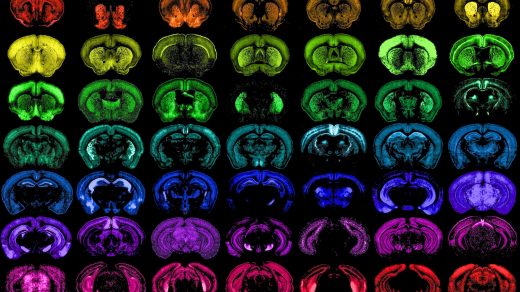Newsday

Dr Adeyemi Maxwell
PARKINSON’S DISEASE is a progressive neurological disorder that affects movement control. It primarily results from the gradual degeneration of dopamine-producing cells in the brain. While the exact cause of Parkinson’s remains elusive, both genetic and environmental factors are believed to contribute to its development.
Parkinson’s disease typically affects individuals over the age of 60, but early-onset cases can occur. Men are slightly more susceptible than women. While the precise cause is unknown, a combination of genetic mutations, environmental triggers like exposure to pesticides or certain toxins, and age-related changes in the brain contribute to the development of Parkinson’s.
According to recent estimates, approximately one per cent of individuals aged 60 and above worldwide live with Parkinson’s. While this percentage might seem modest, the impact of the disease extends beyond mere statistics, touching the lives of millions and prompting a closer examination of its demographic patterns.
In terms of gender, Parkinson’s displays a subtle bias towards men, with slightly higher prevalence rates compared to women. However, the reasons behind this gender discrepancy remain unclear and continue to be a subject of ongoing research.
Age is a significant factor in the development of Parkinson’s, with the majority of cases emerging in individuals age 60 and older. Nevertheless, early-onset Parkinson’s does exist, affecting a smaller percentage of individuals under the age of 50. The age-related aspect of the disease underscores the importance of understanding and addressing the unique challenges faced by both older and younger populations affected by Parkinson’s.
As for racial bias, Parkinson’s seems to affect all races without a clear preference. However, some studies suggest potential differences in the clinical presentation and progression of the disease among different ethnic groups. These variations underline the complexity of Parkinson’s and the need for inclusive research that considers diverse populations.
While Parkinson’s disease does not exhibit pronounced biases based on gender or race, it does demonstrate a notable correlation with age, particularly affecting the elderly. Understanding these demographic nuances is essential for tailoring effective interventions, raising awareness, and promoting inclusive research initiatives that encompass the diverse experiences of individuals living with Parkinson’s globally.
Symptoms
Parkinson’s symptoms may include:
*
Tremor. Rhythmic shaking, called tremor, usually begins in a limb, often your hand or fingers. The shaking may decrease when you are performing tasks.
*
Slowed movement, known as bradykinesia. Over time, Parkinson’s disease may slow your movement, making simple tasks difficult and time-consuming.
*
Rigid muscles. Muscle stiffness may occur in any part of your body. The stiff muscles can be painful and limit your range of motion.
*
Impaired posture and balance. Your posture may become stooped. Or you may fall or have balance problems as a result of Parkinson’s disease.
*
Loss of automatic movements. You may have a decreased ability to perform unconscious movements, including blinking, smiling or swinging your arms when you walk.
*
Speech changes. You may speak softly or quickly, slur, or hesitate before talking. Your speech may be more of a monotone rather than have the usual speech patterns.
*
Writing changes. It may become hard to write, and your writing may appear small.
Causes
Many of the symptoms of Parkinson’s are due to a loss of neurons that produce a chemical messenger in your brain called dopamine. When dopamine levels decrease, it causes irregular brain activity, leading to problems with movement and other symptoms of Parkinson’s disease.
The cause of Parkinson’s disease is unknown, but several factors appear to play a role, including:
*
Genes. Researchers have identified specific genetic changes that can cause Parkinson’s disease. But these are uncommon except in rare cases with many family members affected by Parkinson’s disease.
*
Environmental triggers. Exposure to certain toxins or environmental factors may increase the risk of later Parkinson’s disease, but the risk is small.
*
The presence of Lewy bodies. Clumps of specific substances within brain cells are microscopic markers of Parkinson’s disease. These are called Lewy bodies, and researchers believe these Lewy bodies hold an important clue to the cause of Parkinson’s disease.
*
Alpha-synuclein found within Lewy bodies. Although many substances are found within Lewy bodies, scientists believe that an important one is the natural and widespread protein called alpha-synuclein, also called a-synuclein. It’s found in all Lewy bodies in a clumped form that cells can’t break down. Researchers have found the clumped alpha-synuclein protein in the spinal fluid of people who later develop Parkinson’s disease.
Caring for individuals
with Parkinson’s
Medication management
Individuals with Parkinson’s often rely on medication to manage symptoms. Adhering to prescribed medication schedules is crucial for symptom control.
Physical Therapy
Engaging in regular physiotherapy can help maintain mobility and flexibility. Therapists can design exercises tailored to the individual’s specific needs.
Speech and
swallowing therapy
Parkinson’s can affect speech and swallowing. Speech therapy can assist in maintaining communication skills, and specific exercises can aid in addressing swallowing difficulties.
Emotional support
Emotional well-being is integral. Support groups, counselling and involvement in activities they enjoy can help individuals cope with the emotional challenges associated with Parkinson’s.
Adapting the
living environment
Making modifications to the living environment, such as installing handrails, ramps and other safety features, can enhance the individual’s ability to move around independently.
Nutritional support
A balanced diet, rich in nutrients, is essential. A nutritionist can help design a diet plan that supports overall health and addresses any specific nutritional needs.
Assistive devices
Depending on the progression of the disease, individuals may benefit from assistive devices like walking aids, canes, or wheelchairs to maintain independence. Parkinson’s disease is a complex condition that requires a multidimensional approach to care. While its impact can be challenging, advancements in medical research, combined with a supportive environment and proactive healthcare, can significantly improve the quality of life for individuals with Parkinson’s.
By fostering understanding, providing tailored care, and embracing a holistic approach, we can collectively work towards enhancing the lives of those affected by Parkinson’s disease.
Contact Dr Maxwell on 3631807 or 7575411


